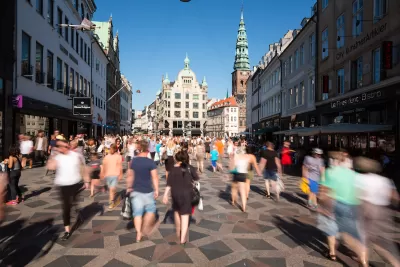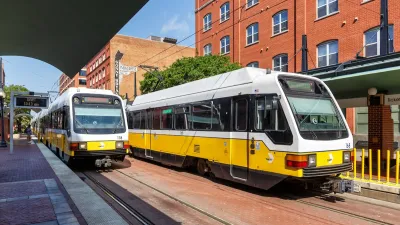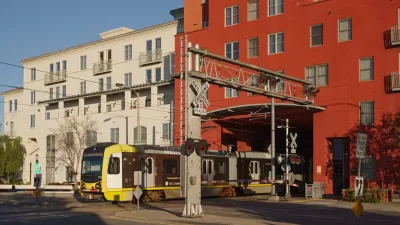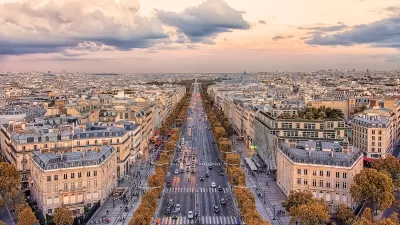The vibrancy of a neighborhood may be defined by what people can see in their immediate vicinity.

An article by Tristan Cleveland in Happy Cities describes how visual cues in the immediate field of vision can make a significant impact on the vibrancy of urban streets.
Cleveland describes a study by researcher Todor Stojanovski, who noticed that places like Copenhagen’s Ørestad Station, an ostensibly transit-oriented development, still lack street life despite access to transit and urban amenities within a 400-meter radius. Stojanovich’s analysis found that “The majority of streetlife happens within 100 metres of stations.”
For Stojanovich, this is explained by the fact that a human can generally see clearly for roughly 100 meters. Thus, “What matters most for supporting commercial space isn’t what people can theoretically walk to, but what they can see.” Urbanist Jan Gehl has discussed a similar theory, calling the concept the “social field of view.” For Gehl and Stojanovich, “This is the scale that matters most for creating successful streets.”
Cleveland notes, “Four hundred metres remains the right scale for some things: People will find their way to their homes and office jobs without needing to see them from the transit station. But to create vibrant streets and public spaces, and to support street-level businesses, designers have to focus on the human eye.”
FULL STORY: The secret to vibrant streets? Focus on what people can see

Alabama: Trump Terminates Settlements for Black Communities Harmed By Raw Sewage
Trump deemed the landmark civil rights agreement “illegal DEI and environmental justice policy.”

Study: Maui’s Plan to Convert Vacation Rentals to Long-Term Housing Could Cause Nearly $1 Billion Economic Loss
The plan would reduce visitor accommodation by 25% resulting in 1,900 jobs lost.

Planetizen Federal Action Tracker
A weekly monitor of how Trump’s orders and actions are impacting planners and planning in America.

Wind Energy on the Rise Despite Federal Policy Reversal
The Trump administration is revoking federal support for renewable energy, but demand for new projects continues unabated.

Passengers Flock to Caltrain After Electrification
The new electric trains are running faster and more reliably, leading to strong ridership growth on the Bay Area rail system.

Texas Churches Rally Behind ‘Yes in God’s Back Yard’ Legislation
Religious leaders want the state to reduce zoning regulations to streamline leasing church-owned land to housing developers.
Urban Design for Planners 1: Software Tools
This six-course series explores essential urban design concepts using open source software and equips planners with the tools they need to participate fully in the urban design process.
Planning for Universal Design
Learn the tools for implementing Universal Design in planning regulations.
Caltrans
Smith Gee Studio
Institute for Housing and Urban Development Studies (IHS)
City of Grandview
Harvard GSD Executive Education
Toledo-Lucas County Plan Commissions
Salt Lake City
NYU Wagner Graduate School of Public Service





























